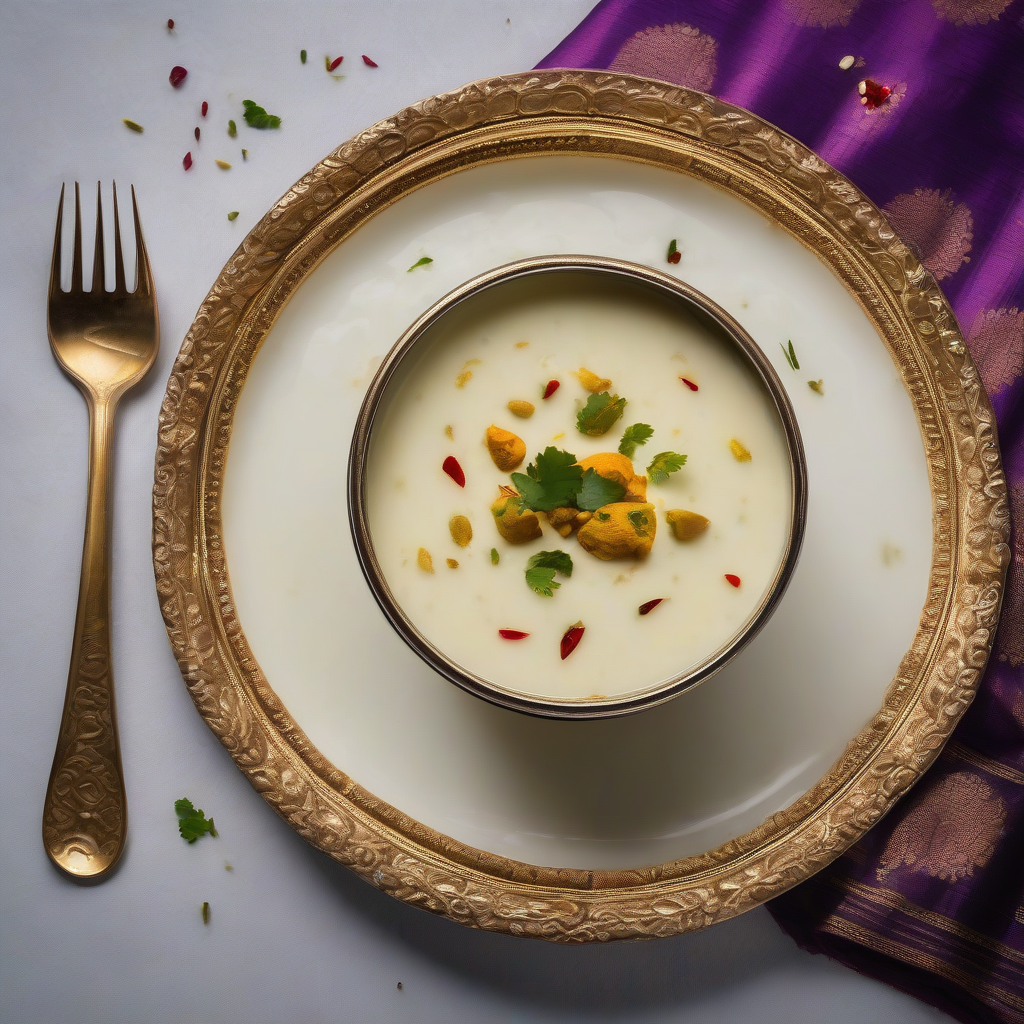Aye Aye Aye! Basundi Banane ka Time Aagaya! (It’s Time to Make Basundi!)
Namaste doston! Kem cho? Kai ho? Chef Curry Do’pyaza here, ready to tickle your taste buds with a sweet, creamy treat! Today, we’re diving into the delicious world of Basundi, a classic Indian dessert that’s simpler to make than you might think.
Basundi is a beloved sweet, especially in Maharashtra and Gujarat. You’ll find it gracing tables during festive occasions like Diwali, Dussehra, and especially Raksha Bandhan. It’s also a common sight at weddings and other joyous celebrations. Think of it as a sweet hug in a bowl, perfect for sharing with loved ones.
A Bit of Basundi History
Basundi’s origins are a bit hazy, like the creamy surface of the dessert itself. But it’s believed to have originated in Maharashtra or Gujarat centuries ago. It’s essentially a thickened, sweetened milk, a testament to the ingenuity of Indian cooks who knew how to transform simple ingredients into something truly special. It’s a delightful dish that has been passed down through generations, with each family adding their own special touch.
Recipe Time!
Preparation Time: 10 minutes
Cooking Time: 45-60 minutes
Ingredients:
- 1 litre Full Fat Doodh (Milk) – Whole Milk is best!
- 1/2 cup Shakkar (Sugar) – Adjust to your sweet liking.
- 1/4 teaspoon Elaichi Powder (Cardamom Powder) – For that aromatic touch.
- 1 tablespoon Charoli (Chironji Nuts) – Adds a delightful crunch.
- 1 tablespoon Badam (Almonds) – Sliced or slivered.
- 1 tablespoon Pista (Pistachios) – Sliced or slivered, for a pop of colour.
- A pinch of Kesar (Saffron) strands – Optional, but adds a luxurious flavour and golden hue.
Let’s Get Cooking!
- The Milk Magic: Pour the milk into a heavy-bottomed pan. This is important, folks! A heavy bottom prevents the milk from scorching.
- Simmer Down: Place the pan on your gas stove over medium heat. Bring the milk to a gentle simmer, stirring occasionally. We don’t want any skin forming on top just yet.
- The Slow Dance: Once simmering, reduce the heat to low. This is where the patience comes in. Let the milk simmer gently, stirring every 5-10 minutes. This slow cooking process is what thickens the milk and gives Basundi its signature creamy texture.
- Sweeten the Deal: After about 30-40 minutes, when the milk has reduced by about half and thickened slightly, add the sugar. Stir well until the sugar dissolves completely.
- Flavour Fiesta: Add the cardamom powder and saffron strands (if using). Give it a good stir. The aroma will be heavenly!
- Nutty Delight: Now, add the chopped almonds, pistachios, and charoli. These nuts add a wonderful texture and flavour to the Basundi.
- Final Flourish: Continue to simmer for another 10-15 minutes, stirring occasionally, until the Basundi reaches your desired consistency. It should be thick enough to coat the back of a spoon.
- Cool and Serve: Remove the pan from the heat and let the Basundi cool to room temperature. Once cooled, transfer it to a serving bowl and refrigerate for at least 2-3 hours before serving. This allows the flavours to meld together beautifully.
Chef’s Tips for the Best Basundi:
- Full Fat is Key: Don’t skimp on the full-fat milk. It’s essential for that rich, creamy texture.
- Patience is a Virtue: Don’t rush the simmering process. The slow cooking is what develops the flavour and thickens the milk.
- Stir, Stir, Stir: Regular stirring prevents the milk from scorching and ensures even cooking.
- Adjust the Sweetness: Taste the Basundi as it cooks and adjust the sugar according to your preference.
- Garnish with Love: Before serving, garnish with extra nuts, saffron strands, or even a sprinkle of rose petals for a beautiful presentation.
Basundi, Your Way:
- Gas Stove: Follow the instructions above for the classic method.
- Induction Stove: The same method applies, just adjust the heat settings as needed.
- Pressure Cooker (Not Recommended): Basundi is best made with slow simmering. A pressure cooker won’t give you the same result.
- Oven (Not Recommended): The oven isn’t ideal for Basundi as it requires constant stirring.
- Microwave (Not Recommended): Microwaving is also not recommended as you won’t be able to control the thickening process effectively.
- Slow Cooker/Crockpot: You can make Basundi in a slow cooker! Combine all ingredients in the slow cooker and cook on low for 6-8 hours, stirring occasionally.
Nutritional Information (approximate, per serving):
- Calories: 250-300
- Fat: 15-20g
- Protein: 8-10g
- Carbohydrates: 20-25g
Serving Suggestions:
- Serve chilled as a dessert after a delicious Indian meal.
- Pair it with poori for a festive treat.
- Garnish with chopped nuts and saffron strands for an elegant presentation.
- Enjoy it on its own as a sweet and satisfying snack.
So there you have it, folks! A simple yet elegant recipe for Basundi that’s sure to impress your friends and family. It’s a dessert that’s steeped in tradition and bursting with flavour.
Now, go forth and create some Basundi magic in your kitchen! Make it with love, share it with your loved ones, and enjoy the sweet taste of tradition.
Happy cooking, doston!
Chef Curry Do’pyaza signing off!
